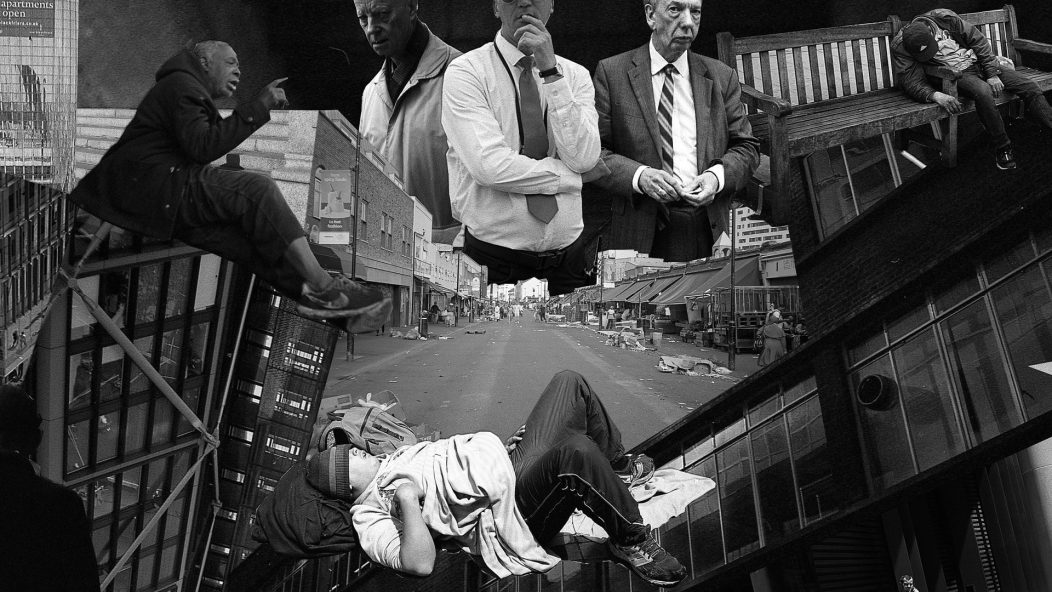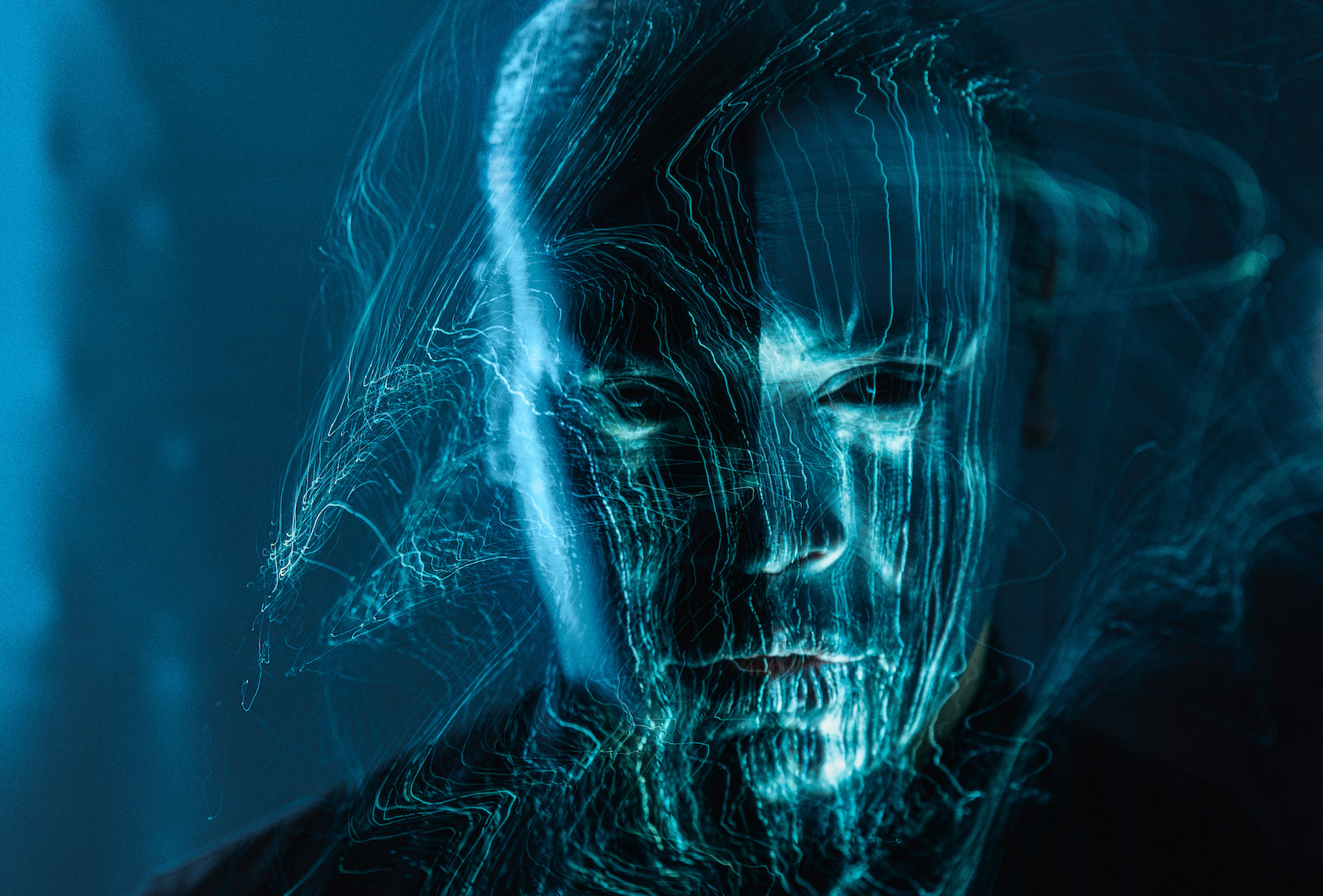
Penance Stare and Atvm Pair Perfectly On "The Split" (Full Split Stream + Interview)
It’s been a while since I covered a split, but it’s time for a pretty cool one, and, to the aptly titled The Split‘s benefit, this is a strange combination on paper. English artists Penance Stare and Atvm both operate in their own little niches of extreme metal, the former an experimental (and formerly raw) black metal project which draws from heightened tension and bizarre chords to create anguished atmospheres and the latter an avant-garde, bizarre death metal project who released one of 2021’s most underrated albums (also, the cover art is amazing). Though both experimental artist collectives, there is a separation between Penance Stare and Atvm which makes this pairing a little weird, but in a true and collaborative split sense, both bands met the other somewhat in the middle, creating a unique listening experience for established listeners.
Opening the split is Penance Stare, who suddenly grew a real sense of musical mass and harmonic adventurousness when compared to their older (still experimental) music. Drawing from dark hardcore and screamo as well as discordant black metal and weird death metal, Penance Stare’s half of The Split is a testament to the darker shades of the absence of color. Vocalist and guitarist Esmé’s horrific shriek adds a definite emotional depth to Penance Stare’s sound–a desperate, tortured sound which pairs perfectly with the tension these two musicians bring on their half. I would be remiss if I did not make mention of Skylar Gill’s creative, near-blast-free approach to the drums, opting for weird grooves and active, full-kit use rather than the simple blast beats we often find in this type of black metal.
Atvm’s side came as a bit of a surprise. Last year’s colorful Famine, Putrid and Fucking Endless presented death metal in a classic “weird German” sense, recalling Disharmonic Orchestra’s strangest moments and pushing the envelope even further. On The Split, Atvm is still undeniably death metal, but crispier and with a thinner tone to match Penance Stare’s blackened dirges. There are even some black metal moments which make their way into the fold, but not without some classic progressive death metal grooves and blistering, absolutely pissed riff work. Atvm acts as both Penance Stare’s foil, but also their companion on this split, and this type of variety and conceptual execution shows just how powerful of a band Atvm truly is.
Both of these bands are acts to watch, and The Split is varied enough to walk away with not just one, but two new favorites. Listen to the release in full and read an interview with Penance Stare’s Esmé Louise Newman below.
…
…
Given your stylistic differences, what brought about your split with Atvm, who is normally a death metal band?
It’s actually rare that we play with any bands who are hugely similar to us sonically, and that’s not a priority of ours anyway. Typically we share bills with noise rock bands, and bands on the weirder side of metal. We were introduced to Atvm through our good friends Plague Rider, who we did a short tour with right before lockdown. Not only were we impressed with their technical and eclectic approach, but we also struck up an immediate friendship. Personal connection is much more important than genre, to us. We shared another bill last year, where all of the split tracks were played live, and which cemented the idea as a good one.
What was this live experience like? Do you find these songs are any different in a live setting?
Both shows with Atvm have been some of our best, from our perspective, and we fully intend to do more. We’ve obviously tried our best to capture the live sound and experience in the recording as much as possible. It was recorded in about six hours, and most of the vocals are first takes, there are no extra layers of overdubs or anything. The final song on our side,
“Oubliette,” typically ends with me venturing into the crowd, extending the riff as long as needed, and screaming into the air until I’m physically exhausted. Of course, I couldn’t quite do that in the studio, but ending the song breathless on the floor of the live room hopefully comes about as close as possible.
Do you feel like something is lost in that the recording doesn’t have this interactive aspect to it?
I wouldn’t say it’s lost, exactly, but I think we both prefer playing live to recording. It might not be immediately apparent given how chaotic our sound can be, but we’re both perfectionists to an extent. In a live setting, the adrenaline carries us and mistakes pass by without much thought, maybe a little smile at each other on stage, but you just keep pushing forwards. We’re challenging ourselves to write and perform at the very edge of our abilities, so the level of scrutiny that the studio imparts can be a lot of pressure. We actually spent close to a year trying to record this entirely ourselves, before coming to the realization that we were creating much more stress for ourselves than necessary.
I find it interesting that you create a dichotomy between chaos and perfectionism–I find this type of discordant, black metal-oriented music demands more attention from the musician since the atmosphere needs to be exact. Do you find Penance Stare’s chaos to be more reckless in that respect?
I think a degree of chaos is intrinsic to the sound, and so capturing that is the challenge. A controlled explosion. One way to look at it is as “non-linear sound”, sounds like screaming are loud and sudden, which contrasts with what we typically expect of the ambient sounds around us. We associate volume with proximity, and proximity to danger, so sudden volume triggers an emotional response, usually something like fear. Ideally, this music should provoke a similarly intense emotional reaction, without needing so much in the way of theatrics or ornament. We have also experimented live with things like recordings of rainfall, played at a low volume throughout so as to only be audible in quiet moments and between songs, to help suggest a sort of “set and setting” for the music, but I think there’s a danger in being too heavy handed with this.
So, and correct me if I’m wrong, Penance Stare isn’t necessarily one for planned theatrics and more for immediacy and being one with the moment?
Exactly. Perhaps this is where the screamo influence is most apparent, the vulnerable, confessional aspect. A lot of my favorite music, or art in general actually, has this kind of intimacy that can even be a little uncomfortable for some people. But it makes you feel something, at least.
The screamo influence is definitely something I’ve seen growing in black metal over the past decade or so. I like to tell people that they are sonically related and ingratiate each other, which elicits, uh, reactions. Seeing how it works so well with Penance Stare, do you agree with this? How do you see the screamo and black metal interact within the Penance Stare universe?
Absolutely, some of the most impactful and influential things I’ve come across would fall into that genre, and it isn’t just the music itself but the aesthetics, the attitude and politics, discovering that in my late teens had an enormous effect on me.
I think with relation to black metal, it feels to me almost like coming to a similar conclusion via different routes. Of course you have sonic similarities with blast beats, tremolo picking, high pitched screams etc, but as I already touched on, my favorite things from both genres have that sense of intimacy, it’s a record in a historical sense, that’s what it sounded like in that particular basement at that particular time, whether we’re talking about Makara or Mütiilation. A sort of instant nostalgia. There’s something magical about that, I think.
Is there anything else you would like to share?
Believe survivors, look after your friends, trans liberation now, queer love forever.
…
Penance Stare and Atvm’s The Split releases via Forgotten Sorcery on July 11th.










